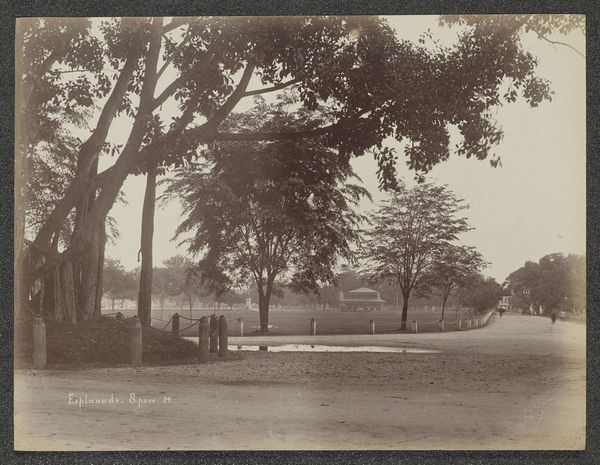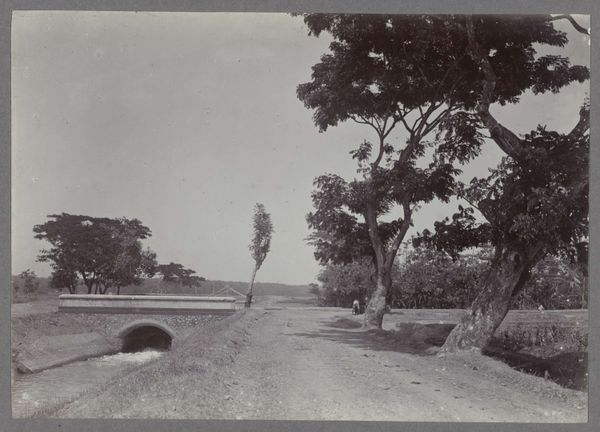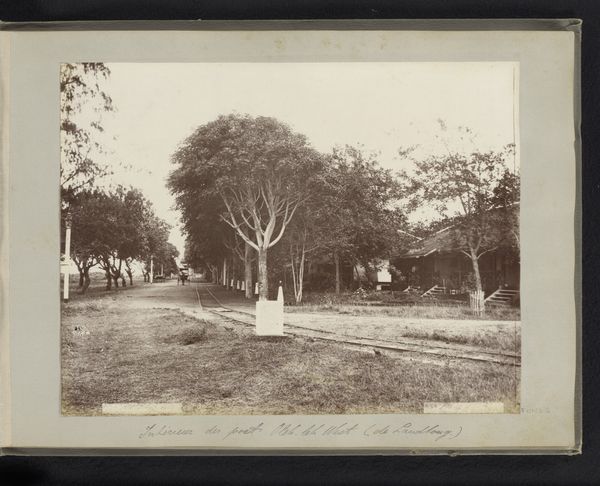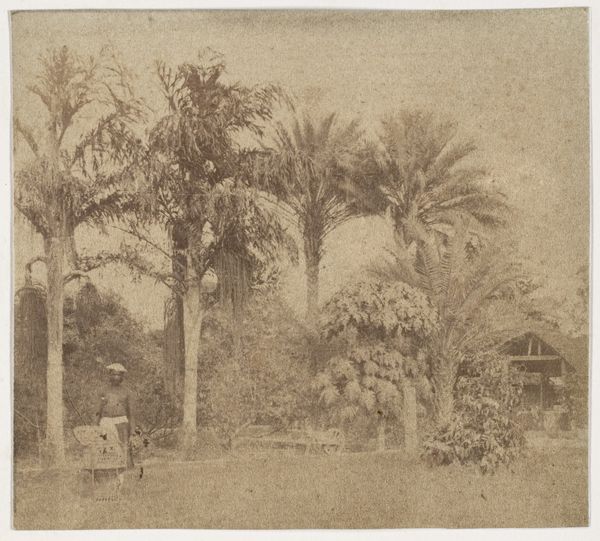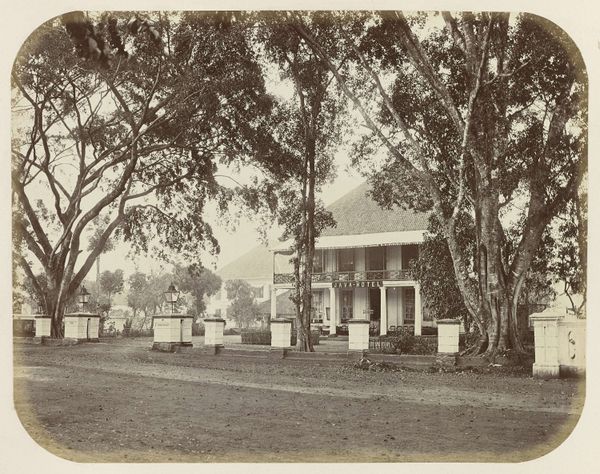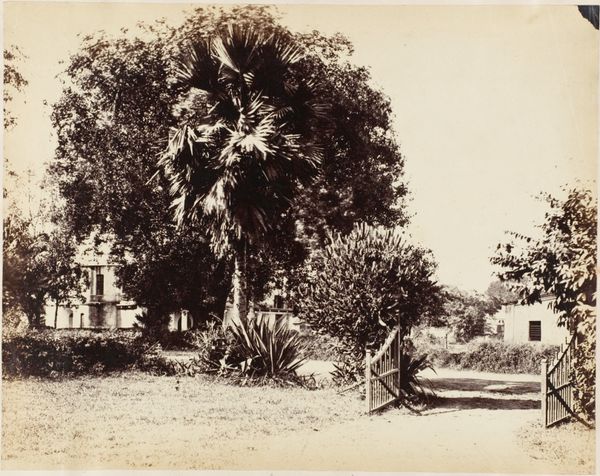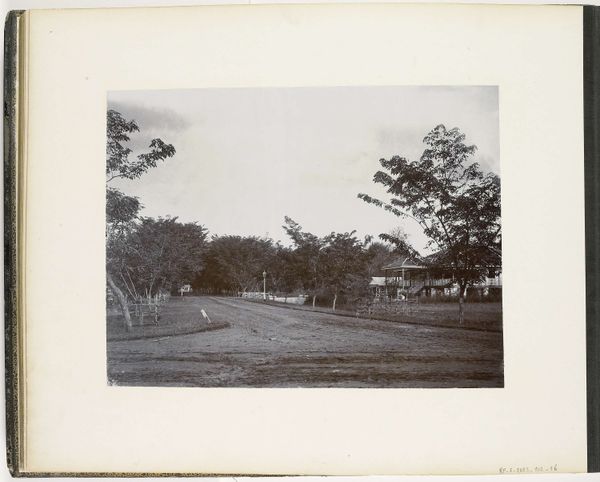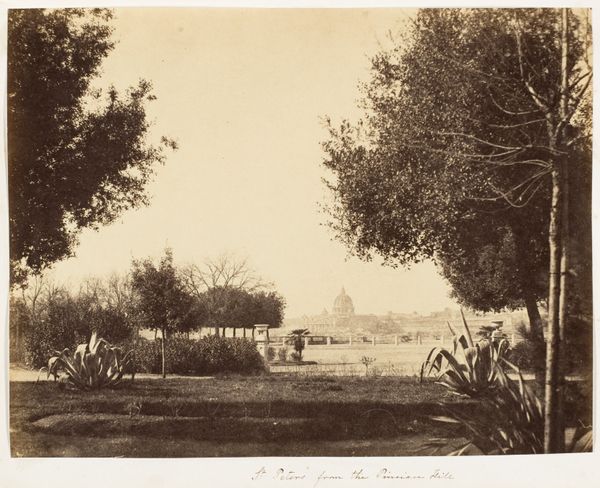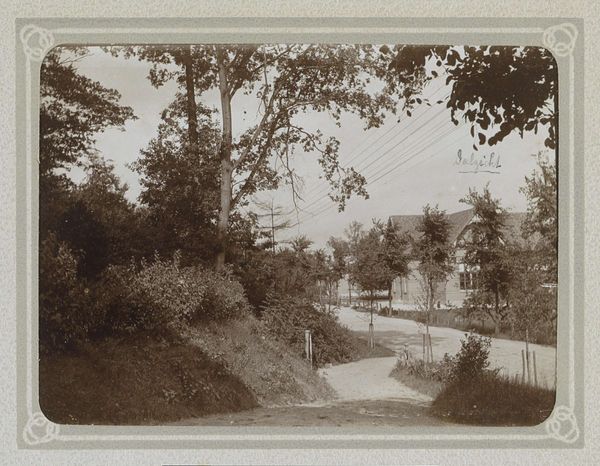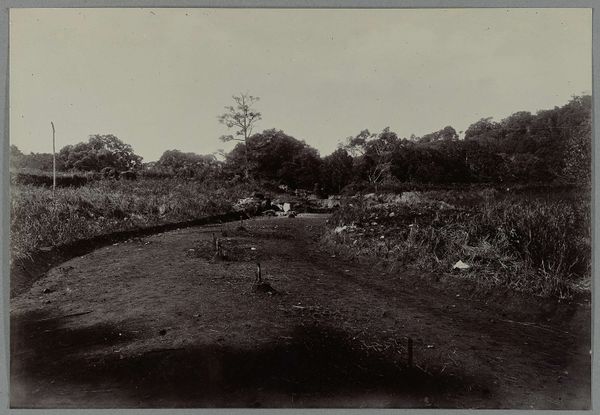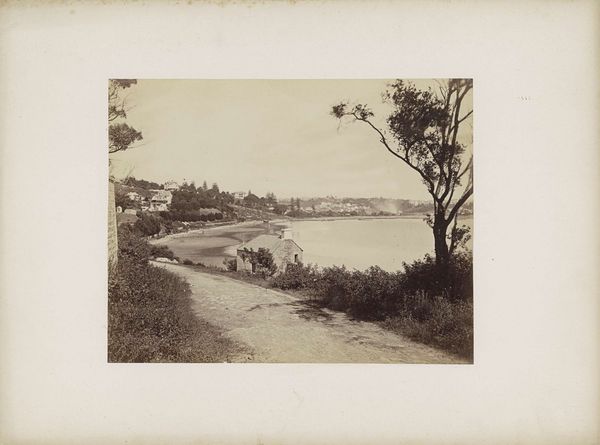
photography
#
garden
#
landscape
#
photography
#
realism
Dimensions: Image: 19.1 x 24.7 cm (7 1/2 x 9 3/4 in.) Mount: 21.1 x 28 cm (8 5/16 x 11 in.)
Copyright: Public Domain
Curator: This is a fascinating 1850s photograph titled "Garden in Indigo Districts," taken by Captain R. B. Hill. It is now housed at the Metropolitan Museum of Art. Editor: The sepia tones immediately create a sense of serenity, yet there's a melancholic feel, perhaps evoked by the composition itself with the framed perspective leading into the hazy distance. Curator: The "Indigo Districts" refer to areas in India where indigo was cultivated, often under harsh colonial conditions. So that feeling might connect with a history of extraction and labor practices associated with indigo production for textile manufacture. The photographic style also signifies early photographic efforts to document aspects of colonial rule and trade. Editor: I notice how the arrangement of the trees—framing the path and a distant field—directs the eye to this light-filled gap and draws me into the image, with tonal scales emphasizing foreground textures with more muted definition in the far-off scene. It makes me wonder how to consider that visual relation of near and far in view of your understanding of what indigo districts stood for. Curator: Indeed, one can think about the ordering and rationalizing eye of colonialism here; an ordered estate, bordering an economy premised on exploitation, visually rendered here using technologies related to vision and power. What appears to be picturesque hides socio-economic relationships under the colonial authority. Editor: And that formal aspect echoes with the social. Perhaps we might note, finally, how even an apparently innocuous image of nature can bear such traces of the social conditions that made its visual organization possible in the first place. Curator: Yes, these early photographs, at first glance simply recording gardens or estates, provide crucial visual and historical information about colonial histories. A potent example, I'd say, of art historical analysis benefiting from collaborative insight.
Comments
No comments
Be the first to comment and join the conversation on the ultimate creative platform.
